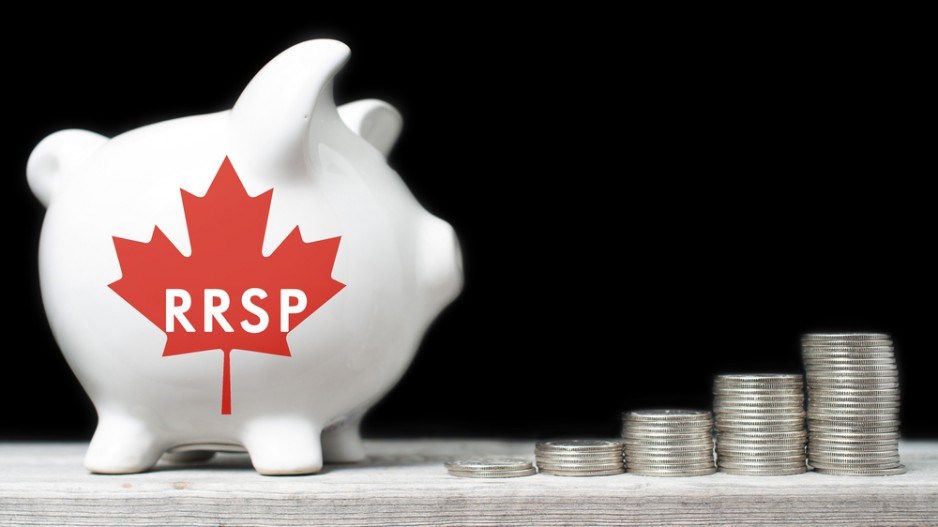As the registered retirement savings plan (RRSP or RSP) deadline approaches, Canadians are thinking about where to invest their hard-earned money.
In any year, the decision may feel daunting. However, the COVID-19 pandemic has created unique financial challenges for many people, while others may not feel eager about investing during a time of uncertainty.
Steve Bridge, an advice-only certified financial planner and money coach with Money Coaches Canada, told Business in Vancouver that making a rash decision is never recommended. Instead, he said people should plan for the long term – which will include times of uncertainty.
If you are planning to invest in an RRSP before the March 1 deadline, there are several things to consider.
Investing in an RRSP
When it comes to saving for retirement, there is no one-size-fits-all approach. Often, a combination of investing in RRSPs and Tax-Free Savings Accounts (TFSAs) is best, depending on one’s individual circumstances. While people get an immediate tax deduction when they invest in an RRSP, the money is fully taxable when withdrawn. RRSPs are therefore most suitable for those earning higher incomes, and those who do not plan to access the funds until retirement, when they will be in a lower tax bracket.
“One has to be cognizant of the impact of RRSP withdrawals on taxes and income-based retirement benefits,” Richard Wong, a chartered professional accountant at Baker Tilley WM LLP, told BIV.
Conversely, TFSAs are best for those planning to access funds before retirement, since withdrawals are not taxable and the contribution room is replenished the following year. Subject to certain conditions and repayment terms, tax-free RRSP withdrawals are allowed for first-time homebuyers, through the Home Buyer’s Plan, and for those enrolling in further education, through the Lifelong Learning Plan.
Pensions and taxable investments
Along with RRSP withdrawals, Wong said other retirement income from pensions and taxable investments can push people into to a higher tax bracket in retirement. Old Age Security (OAS) clawbacks occur when one’s income in retirement exceeds a specified threshold. OAS is reduced by $0.15 for every dollar above $79,845 in 2021, with OAS fully eliminated when income reaches $129,075. RRSP withdrawals are included in this calculation, Wong explained.
“This could also result in lower-income seniors having their GIS [Guaranteed Income Supplement] reduced or eliminated,” Wong said. “Conversely, TFSA withdrawals are not included in these income tests. Furthermore, when the last surviving spouse passes away, the remaining RRSP (or Registered Retirement Income Fund if over 71) balance is fully taxable to the beneficiaries, thus significantly reducing the amount transferred.”
Despite these impacts, if an employer is offering an RRSP match, advisers suggest it still worth taking advantage of since it is effectively “free money.”
Income considerations and government money
Catherine Hurlburt, a senior financial planner with Assante Financial Management Ltd., said people need to look at their last pay stub or add up their total income from all sources if they had more than one job, before they make any decisions, so that they can make the most “tax-efficient” contribution.
This year, any government money accepted during the pandemic – such as the Canada Emergency Response Benefit, student benefit or the BC Recovery Benefit – is taxable. As a result, these funds need to be factored into taxable income, too.
“Now is the time to tax plan to see how much benefit an RSP contribution will give you,” said Hurlburt, who added, depending on your circumstances, an RSP contribution could provide a tax refund, prevent you from having to pay tax or influence your eligibility for various government programs – including Pharmacare, tax and climate rebates and OAS. While it may be a difficult time for many, she noted that people should still make their finances a priority. If they don’t, they could end up paying more than they should or saving less than they could.
Spousal income splitting
RRSPs also enable spousal income splitting, where a higher-income spouse in a higher tax bracket can deduct contributions made to the lower-income spouse’s RRSP. Withdrawals upon retirement would be taxed at the lower-income spouse’s tax rate, Wong explained.
For many others, however, the pandemic hasn’t allowed for this type of planning.
In the three weeks leading up to Christmas, Hurlburt said, she had nine phone calls related to divorce financial planning advice. Typically, she has two or three calls related to separations in a month.
“Ignore the noise”
For people who are anxious about investing due to the pandemic, Bridge noted that there are periods of uncertainty at all times. The key, however, is to remember that the market trends upward in a medium-to-long-term financial chart.
“Think about the long term, ignore the noise,” Bridge said, noting that the market will fluctuate, which can induce anxiety. He added that people are better off financially investing all of their money at once, rather than incrementally.
“The longer you’re in the market, the better,” explained Bridge, who added it can make people feel better to spread a lump-sum investment out. If someone chooses to do so, they should set specific time periods and amounts to invest and forget about timing the market.
For short-term investments, Bridge said a high-interest tax-free savings account works best.




